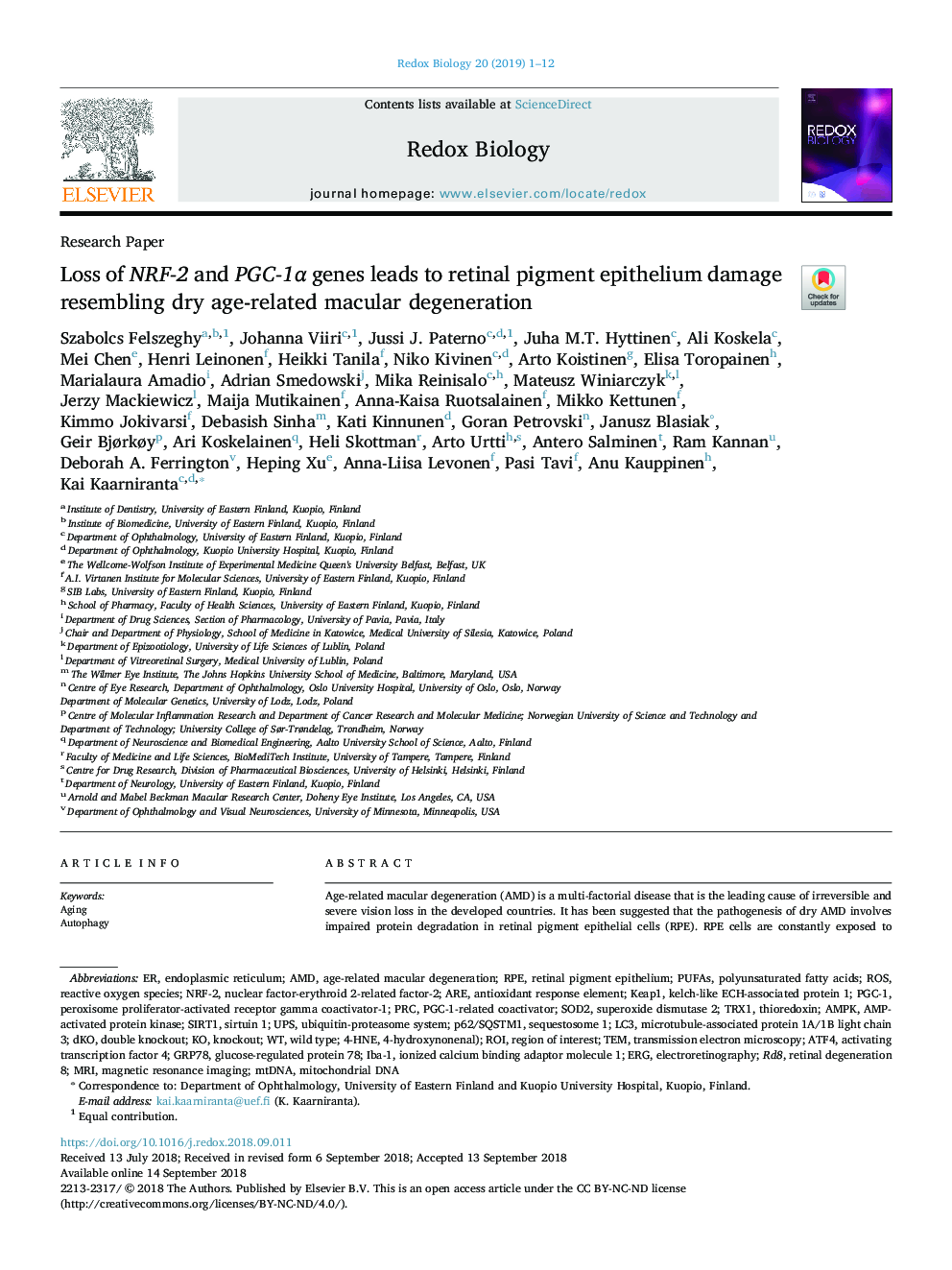| Article ID | Journal | Published Year | Pages | File Type |
|---|---|---|---|---|
| 10156653 | Redox Biology | 2019 | 12 Pages |
Abstract
Age-related macular degeneration (AMD) is a multi-factorial disease that is the leading cause of irreversible and severe vision loss in the developed countries. It has been suggested that the pathogenesis of dry AMD involves impaired protein degradation in retinal pigment epithelial cells (RPE). RPE cells are constantly exposed to oxidative stress that may lead to the accumulation of damaged cellular proteins, DNA and lipids and evoke tissue deterioration during the aging process. The ubiquitin-proteasome pathway and the lysosomal/autophagosomal pathway are the two major proteolytic systems in eukaryotic cells. NRF-2 (nuclear factor-erythroid 2-related factor-2) and PGC-1α (peroxisome proliferator-activated receptor gamma coactivator-1 alpha) are master transcription factors in the regulation of cellular detoxification. We investigated the role of NRF-2 and PGC-1α in the regulation of RPE cell structure and function by using global double knockout (dKO) mice. The NRF-2/PGC-1α dKO mice exhibited significant age-dependent RPE degeneration, accumulation of the oxidative stress marker, 4-HNE (4-hydroxynonenal), the endoplasmic reticulum stress markers GRP78 (glucose-regulated protein 78) and ATF4 (activating transcription factor 4), and damaged mitochondria. Moreover, levels of protein ubiquitination and autophagy markers p62/SQSTM1 (sequestosome 1), Beclin-1 and LC3B (microtubule associated protein 1 light chain 3 beta) were significantly increased together with the Iba-1 (ionized calcium binding adaptor molecule 1) mononuclear phagocyte marker and an enlargement of RPE size. These histopathological changes of RPE were accompanied by photoreceptor dysmorphology and vision loss as revealed by electroretinography. Consequently, these novel findings suggest that the NRF-2/PGC-1α dKO mouse is a valuable model for investigating the role of proteasomal and autophagy clearance in the RPE and in the development of dry AMD.
Keywords
Sirt1sequestosome 1NRF-2nuclear factor-erythroid 2-related factor-2PGC-1sirtuin 1GRP78PUFAsSOD2LC3RPEDKOPRCAMDERGROI4-HNEATF4AMPKAMP-activated protein kinasekeap1Mitochondrial DNAIba-1p62/SQSTM1ROSTrx1AutophagyPolyunsaturated fatty acidselectroretinographyMRIDegenerationretinal pigment epitheliumTemprotein aggregationMagnetic resonance imagingOxidative stressthioredoxinmtDNAAgingage-related macular degenerationSuperoxide dismutase 2Ubiquitin-proteasome systemendoplasmic reticulumantioxidant response elementactivating transcription factor 4region of interestionized calcium binding adaptor molecule 1Transmission electron microscopydouble knockoutknockoutwild typeAREProteasomeglucose-regulated protein 78Kelch-like ECH-associated protein 1Reactive oxygen speciesUPS
Related Topics
Life Sciences
Biochemistry, Genetics and Molecular Biology
Ageing
Authors
Szabolcs Felszeghy, Johanna Viiri, Jussi J. Paterno, Juha M.T. Hyttinen, Ali Koskela, Mei Chen, Henri Leinonen, Heikki Tanila, Niko Kivinen, Arto Koistinen, Elisa Toropainen, Marialaura Amadio, Adrian Smedowski, Mika Reinisalo, Mateusz Winiarczyk,
